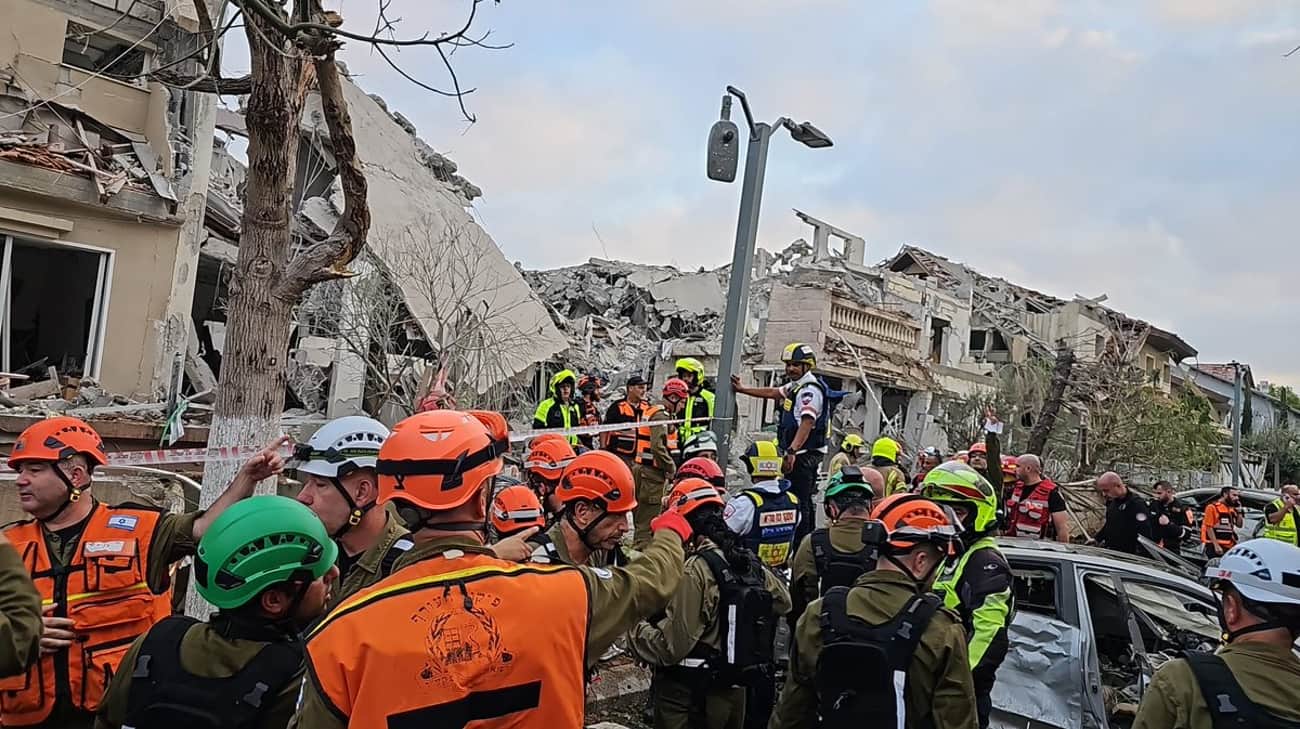Israel and Iran: This has happened

Thursday 12 June
The recent weeks’ talks between the US and Iran have stalled. Both parties want an agreement – the United States wants Iran to cease uranium riot and Iran wants to remove sanctions against the country. Despite this, the parties seem to have reached a dead end. Iran announced that it is planning a new enrichment facility.
US President Donald Trump warned that an Israeli attack could « very well happen » and lead to a « massive conflict ». The United States took home non-necessary personnel from the region, as Iran threatened to respond to any attacks in attacking US goals.
Donald Trump had received information from Israel that they were planning to attack, but later said that the United States had not participated in the implementation.
The night against Friday June 13th
Shortly after 02 Swedish time, the night of Friday, explosions were heard in Tehran. For several hours the attacks continued, carried out with 200 combat plans. The attacks were mainly directed at Iran’s nuclear program and about ten goals in several places, including the nuclear energy plant Natanz in central Iran.
The mighty Revolutionary Guard’s leader Hossein Salami was killed as well as Defense Manager Mohammad Bagheri, in attacks on residential areas in Tehran. Several of Iran’s most prominent nuclear energy researchers have also been killed, according to state Iranian media.
The attacks are the largest on Iranian soil since the war between Iran and Iraq in the 1980s. Israel has stated that they will continue. Iran’s highest leader, Ayatolla Ali Khamenei, says in a statement that Israel can count on « a harsh punishment ».
The morning Friday June 13th
Israeli Prime Minister Benjamin Netanyahu said early on Friday morning that Israelis may need to stay in shelters for a long time. Emergency permits have been introduced throughout the country. Iran has also urged its residents not to go out unnecessarily.
Just a few hours after Israel’s initial attacks, Israel states that Iran sent over 100 drones to the country, as Israel says they shot down.
Just before ten o’clock, the Israeli military announces that civilians no longer have to stay close to the shelters.
Iran announces that it will not participate in this weekend’s planned conversation about the nuclear program with the United States. Several countries in the region have closed their airspace, causing major air disorders.
Background
Today remember to get that the US and Iran Once closely allied after the Americans with Britain assisted in the overthrow of Prime Minister Mohammed Mossadeq in 1953. Until the 1980s in 1980, the White House supported Shah Mohammad Reza Pahlavi, but since then the countries have had a more or less bottom -frozen relationship.
At the same time, Israel’s intimate relationship with the United States has left its mark on the dynamics of the larger Middle Eastern region and the night’s eye -catching attacks on Iranian targets is the culmination of a long -growing gunpowder.
US President Dwight D Eisenhower presented in 1957 the historic program « Atoms for Peace » which in Iran’s case meant the beginning of the country’s now -debated nuclear energy project. The United States provided both a nuclear reactor and fuel for weapons production.
After a long -standing dissatisfaction, Iran’s Islamic Revolution was conducted in 1979 and the country -banished Ayatollan Ruhollah Khomeini became its leader. The country thus made a patchwork in its relation to the Western world, symbolically marked by a dramatic hostage of 52 people at the US Embassy in Tehran.
For three decades of constant At the same time, assaults and retaliation between these actors and Israel grew the threat from Iran’s nuclear program. In 2013, President Barack Obama contacted newly -appointed President Hassan Rouhani and thus launched the historic nuclear agreement JCPOA between Iran and P5+1 – the Security Council’s permanent members and Germany – as well as the EU. It was signed two years later and briefly meant that Iranian willingness to cooperate would be rewarded with sanctions.
However, Donald Trump decided in 2018 that the United States would abandon JCPOA and thus crackled the entire agreement. Iran deviated from its commitments to limit its uranium rioting and storage of heavy water, and a few years later, the UN Atomic Energy Agency IAEA was able to confirm that Iran also manufactured uranium metal, which can be used to make the core for an nuclear weapon.
Since Trump’s return to the White House, the United States and Iran have met five times to discuss the atomic program. The president has announced that he does not allow any enrichment of uranium at all, but Foreign Minister Seyed Abbas Araghchi has expressed hopes that it can continue in some form. The plan is for a sixth meeting to take place now on Sunday.







